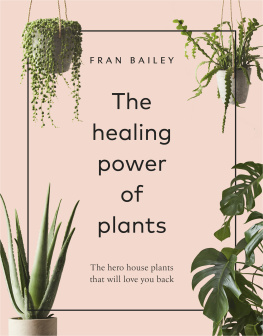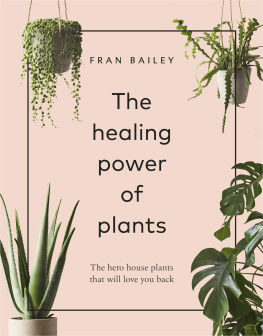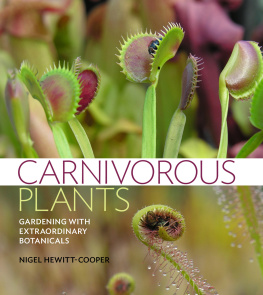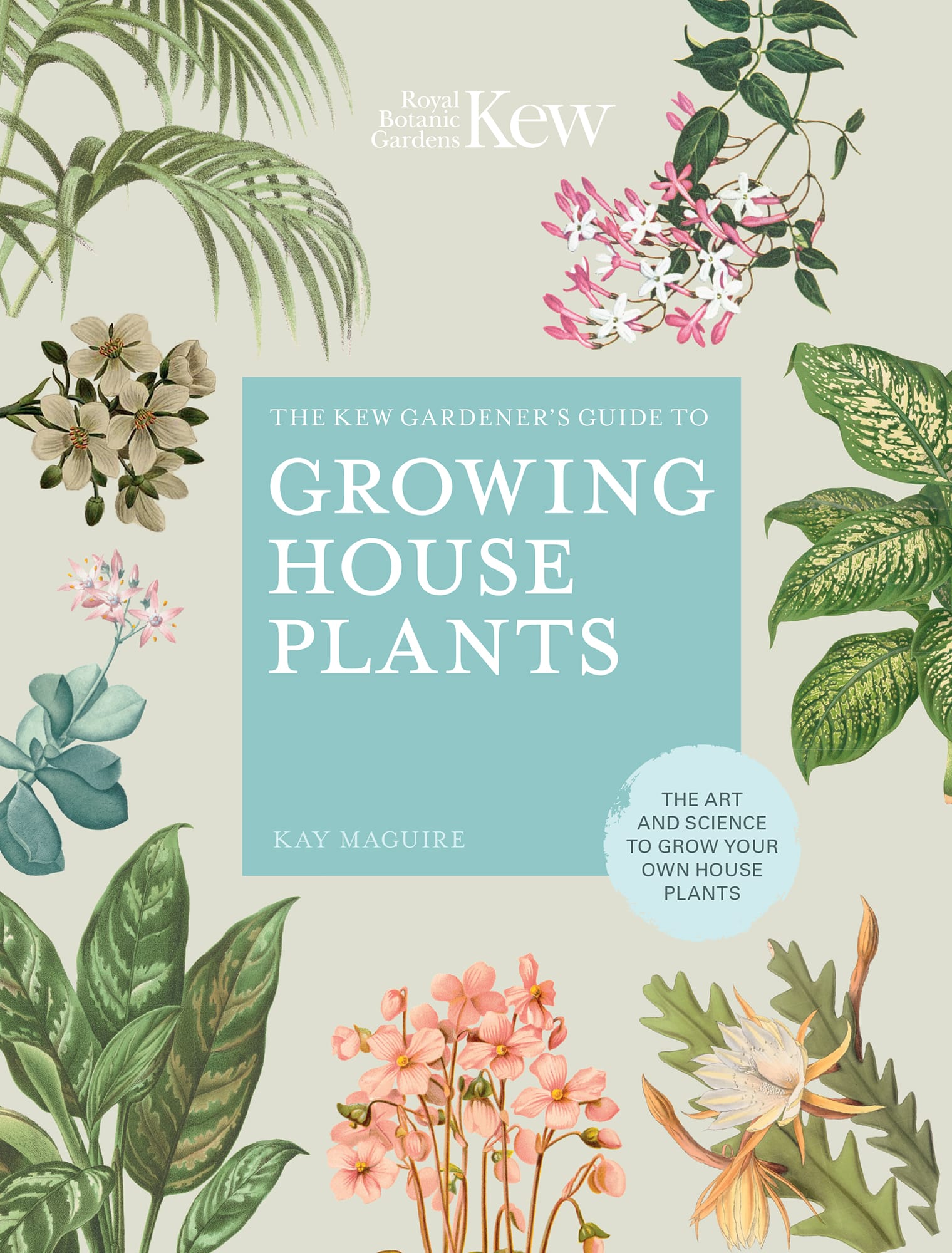
THE KEW GARDENERS GUIDE TO
GROWING HOUSE PLANTS
THE ART AND SCIENCE TO GROW YOUR OWN HOUSE PLANTS
KAY MAGUIRE

Introduction to growing house plants
INTRODUCTION
THE VALUE OF HOUSE PLANTS
People have been growing plants in their homes for thousands of years. From the ancient Egyptians to the Victorians, from palms to cast-iron plants, plants have been used in the home for food, perfume, health or simply for the beauty they bring. The fashion and passion for them have fluctuated over the years, but they always prevail and are currently experiencing a revival.
One of the primary reasons we grow house plants is for their sheer splendour and for what they can bring to our homes. Many house plants are evergreen, chosen for their lush foliage colours, textures and shapes, while flowering plants add vibrant colour and often delicious scent. Increasingly, they are justifiably recognized as design features in their own right, and today there is more choice than ever.
Plants are also good for our health both mental and physical. It has long been known that plants have a positive effect in the workplace and they are just as effective in the home. Psychologically, simply looking at plants lifts our mood. We respond to them in an instinctive way looking at plants is just as restful whether they are inside the house or out in the garden. The close connection with nature has a beneficial effect plus caring after something is therapeutic.
House plants give those with no outdoor space the chance to nurture plants but, unlike a garden, house plants can accompany us wherever we live and move to, growing and maturing with us through the years.
Institutions such as the National Aeronautics and Space Administration (NASA) have studied individual plants and noted that they are actively good for our health, cleaning the air of pollutants and volatile organic compounds many of them ingredients in everyday cleaning products or paints by filtering them through leaves and roots (see also ).
There are plants to suit every spot and every room, from the slowest-growing, most undemanding cacti to the more needy, tropical plants. This book explains the many different types and requirements of house plants and helps you identify those that will grow best in your home. It gives you the inspiration and help to get started and continue to keep your house plants happy and in the very best of health.
Whichever house plants you chose to grow, they will bring colour, interest and clean air to your home or office.
WHAT CAN WE GROW AND WHERE?
The house plants we grow come from a huge range of habitats and ecologies around the world. They are at home on the rainforest floor or high on a mountaintop; they can survive in the bleakest deserts and the wettest swamps, and it is these conditions we need to emulate at home if the plants are to thrive.
Knowing where your plant comes from is the first step in getting it right. Start by understanding the life your plant enjoys in its natural habitat; picture its native environment and you will know exactly what you need to give it to keep it happy.
House plants tend to fall into eight main groups. Although there are some differences within each group, they generally have very distinct requirements reflective of where they come from in the wild.
House plants come in a whole host of shapes, textures and leaf colours to make eye-catching features in the home.
Ferns
These beautiful foliage plants have many different leaf, or frond, shapes and textures. They range from the spectacular to the delicate and graceful, but all thrive in the worlds forests and woodlands and have been around for thousands of years.
They flourish on the damp, shady forest floor where conditions are humid and sunlight is filtered through the taller plants growing above. Replicate this at home with a warm, humid spot out of direct light.
Ferns do not bear flowers or seeds but reproduce by tiny spores held in sporangia, which can sometimes be seen as brown markings on the undersides of the leaves. Ferns must not dry out keep them moist in your most humid room or mist every day.
Palms
Elegant, stately and architectural, with arching stems and decorative, fan-shaped fronds, palms are the plants for creating a jungle in your home. They are the perfect statement plants.
Hailing from the subtropics and tropics, palms are at home in habitats as diverse as rainforests and deserts, but all like warmth and good light the leaf shape is specifically designed to catch the light. They appreciate humidity, so mist them in spring and summer and keep moist, watering them regularly, as soon as the top of the compost starts to feel dry. Clean their fronds by standing them under a tepid shower or outside when summer rains are forecast. Many palms are also very good for the indoor environment, as their leaves absorb toxins and cleanse the air we breathe (see also ).
Succulents
Drought-loving plants, grown mainly for their stunning shapes, textures and foliage, succulents are a huge group (which includes cacti) and can be tiny, fleshy rosettes or huge, spiky trees. Some are trailing, others shrub-like and many have brilliantly coloured flowers.
Their natural habitats are deserts, mountainous regions and savannah all areas with low moisture, dry air and warm, bright sunshine. Succulents have evolved into water-storage organs holding moisture in their leaves, stems and tuberous roots, so that they can survive arid conditions. Their leaves, and sometimes stems, are fleshy and often silver or glaucous green, to reflect light. Some have fine hairs on the leaves, too, to trap moisture. They are undemanding plants that love a warm, bright spot, and are some of the very few plants to cope with baking heat and sunshine.
Mimic their natural ecology by planting them in an open, free-draining compost mix (see ). Water well during the growing season, but then let them rest watering only once the compost has dried out.
Cacti
From the dramatic, sculptural and spiky to the fluffy and weird, cacti are another large group of plants. Although a type of succulent, many have adapted to life in the deserts of the world by modifying their leaves into spines and their stems into plump water-storage organs, to help them through arid times. They love warm, dry air, bright sunshine and free, open soil. Others hail from woodlands and prefer shade and humidity, so always check their cultural needs when you buy them.


















